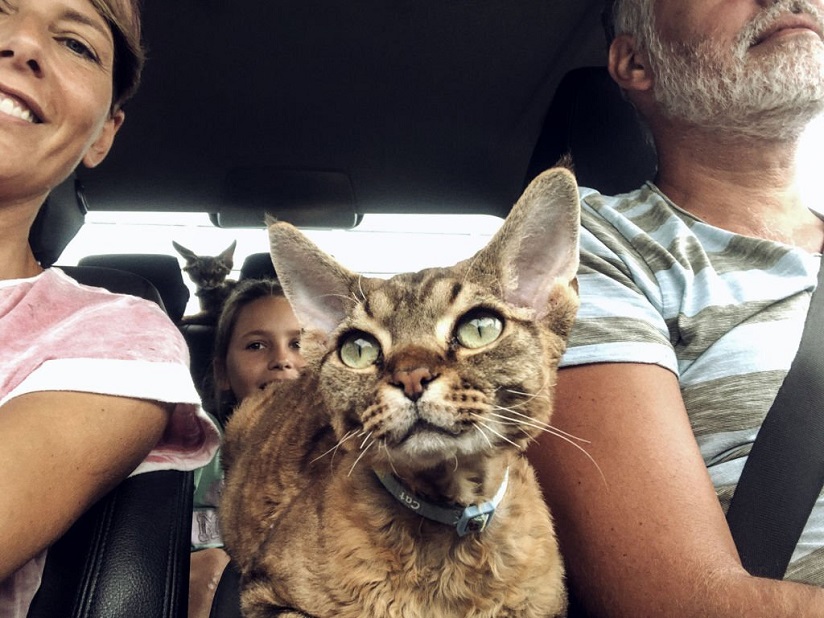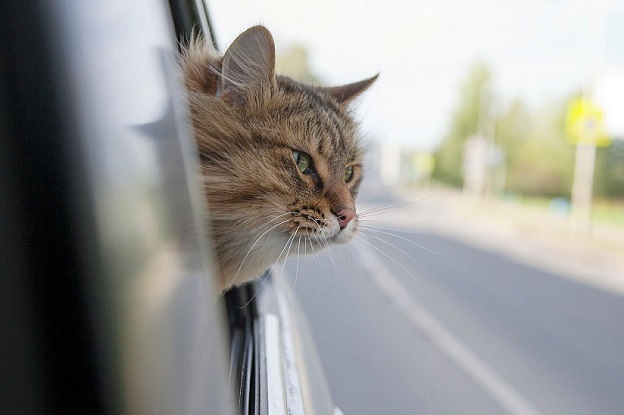
Introduction
Cats are rootless creatures, so it’s no wonder that their owners like to travel with them. If you’ve got a trip coming up, though, you might be wondering how long can a cat travel in a car? The answer is that it depends on your cat and where you are going. If your cat is driving across the country with you from Baltimore to Boise, they might get antsy being cooped up in the car for two weeks straight. Cats who aren’t used to traveling long distances may get tense or even sick from anxiety, especially if they don’t get much exercise during the ride. Fortunately, there are some ways to help make your feline friend more comfortable on their journey. In this guide we will cover everything you need to know about taking your cat on long-distance road trips:
The first thing to do is get your cat used to riding in a car.
The first thing to do is get your cat used to riding in a car. Start as early as possible, so that your cat can become accustomed to the experience. Have plenty of treats on hand and keep them handy, because your cat will need positive reinforcement during this process.
Start by taking short trips with your pet in tow and stop at high-traffic, highly visible intersections where you can pull over if necessary. After several such trips, try longer ones that include stops along the way (at gas stations or rest stops). If there are any major roads involved, make sure they have low-speed limits; otherwise, avoid them completely until your cat has adapted well enough for you to feel confident about taking him out on them!
If you are traveling with your feline friend regularly, start training them as early as possible.
When thinking about taking your cat for a ride, remember that cats are creatures of habit. They do not like change, and they especially don’t like being moved around in new locations or placed in unfamiliar situations. If you plan to travel with your kitty frequently, start training them early, so they feel more comfortable when they go along on trips!
If you just adopted a cat and want to take them on a road trip soon (or already have been traveling with your furball), keep these tips in mind:
- Give them time to get used to the car first before even thinking about putting them inside! Cats need time to adjust before anything else happens.
- Train behavior that will make it easier on everyone involved, such as coming when called or sitting down next to someone instead of jumping on their lap for attention. That will help keep everyone safe during their travels together!
Consider getting your cat microchipped before long-distance travel.
If you are taking a long trip with your cat, consider the option of getting them microchipped. While this won’t be necessary for shorter trips, if your cat is going to be in the car for longer than an hour or so and there are no other safety measures in place (like a harness), it’s best to get them microchipped. If they get lost or stolen, you will have better odds of finding them.
Microchips are also a great way of keeping your cat happy since they allow her to move around more easily and keep herself occupied when she gets bored during the drive. If she has trouble settling down in one spot for too long during car rides due to anxiety caused by unfamiliar stimuli (like horns honking), then having access to toys like balls or treats will help keep her entertained throughout any lengthy drives!
Your cat will be most comfortable in a roomy carrier that’s large enough for them to stand up and turn around in.
Your cat will be most comfortable in a roomy carrier that’s large enough for them to stand up and turn around in. They also need ventilation holes, the padding on the floor, and sturdy sides. The best carriers have a top door, so your cat can see out of the window, but not escape from the car.
The most important thing is to make sure the carrier is easy to clean and carry—this may mean choosing a lightweight carrier made of hard plastic over one made of cloth or fabric.
Make sure that you bring all the cat essentials for your trip.
When traveling with a cat, bring all the essentials. These include:
- A cat carrier that they can fit in comfortably and feel safe. Make sure to have enough room for your cat to move around if they choose.
- A collapsible water bowl that you can fill up with water at gas stations or rest stops along the way. (Some cats will drink out of a regular bowl, but others prefer not to.)
- Treats! You may need these as bribes during long drives or just before bedtime when the kitty starts getting antsy and needs something fun to do before bedtime rolls around.
- Toys! Useful for keeping your pet entertained during long drives or at night when getting bored from all the excitement during daytime hours of travel.
To make your cat feel comfortable inside their crate, give it a good cleaning, then line the bottom with newspaper or paper towels.
To make your cat feel comfortable inside their crate, give it a good cleaning, then line the bottom with newspaper or paper towels. That will help keep their litter box in place and prevent any accidents.
Once you have a clean crate that is ready for use, you need to get your cat used to being inside it before traveling. Start by putting treats into the crate, and encouraging them to go inside on their own. If they are not interested, try placing one of their favorite toys or something else that smells like home inside so they become more familiar with it.
Once your cat is used to going into its crate voluntarily, begin closing the door behind them when they enter so they know what happens when they walk in there (it’s closed). Over time increase the amount of time you leave them in until eventually, you can leave them alone while driving without any issues at all!
For safety reasons, keep your cat secured in the backseat.
- For safety reasons, keep your cat secured in the backseat.
- Make sure that the carrier is securely fastened to the seat with a seat belt or other device. Do not let the carrier move around while you drive, and keep it away from airbags.
- Don’t let your cat roam free in the car or sit on your lap while driving; this could distract you from driving safely and cause an accident.
- Do not allow your cat to sit on any seats besides its own—the driver’s seat or passenger seat (or those of people sitting there).
The best way to keep your cat calm during driving long distances is through distraction by using toys and games.
If a cat is starting to get anxious, you can do several things to help comfort her:
- Bring along a favorite toy.
- Bring along a favorite treat.
- Bring along a favorite blanket, bed, or litter box.
- Bring along something that provides mental stimulation, such as an interactive toy or puzzle feeder. That will help keep your cat’s mind occupied while in the car, so she won’t have time to think about getting sick or feeling motion sick!
If you know where they’ll be spending most of their time when on vacation with you in the car (such as sleeping in the front seat), then bring along something like this so she will feel more at home while traveling with all four paws on solid ground again soon enough!
Here are some tips for keeping kitty safe and comfortable on the road
- Keep the cat in a carrier. If you are planning to transport your cat in the car, it’s best to keep them in a carrier, so they don’t get hurt or underfoot. You can buy one at any pet store or pet supply
- Place the carrier in the backseat. Most cats do better if they’re able to see out of their front windows, but some are more comfortable being behind closed doors—which is why it’s important to always check with your vet before making any changes like this!
- Make sure the carrier is secure. Be sure that any straps or buckles around your cat’s carrier are tightly fastened, so they don’t get loose while driving and end up hurting themselves by escaping… Also, all doors/windows have to be closed before hitting the road!
Last Words
If you have a long drive ahead of you, there are some things you can do to make it a more pleasant experience for both of you. Train your cat to get used to the car by taking short trips in the car, and get them microchipped so that they’ll be able to find their way home if anything happens. Make sure the kitty has plenty of space in the carrier and give it a good cleaning before your trip. Bring all the essentials—food, water, toys—and extras like blankets or pillows in case they need something soft against their belly while napping on long rides (yes, cats nap during car rides!). And finally, keep the kitty secure in the backseat by using a seat belt or safety harness; this will help prevent any accidents during sudden stops or turns.
